Best coastal plants: 21 top choices that will thrive near the ocean
The best coastal plants are known for their color, texture and movement as they shift and ripple in a sea breeze. Here's what to plant in a coastal garden


If you live by the sea you'll need a selection of the best coastal plants that are adapted to thrive in these conditions. Even if you live miles from the sea many of the same plants will thrive in your garden too. All they need is well-draining soil and a sunny spot and they will romp away in gravel gardens, rock gardens, and cracks and crevices.
These are tough plants, used to battling drying winds, drought, scorching sunshine and salty air in exposed sites. You can usually throw poor soil into the mix too. This means a range of these hardy coastal plants will tolerate whatever you throw at them in your own garden.
The best coastal plants are equipped to thrive in challenging conditions. They adapt to whatever the sea climate throws at them, developing tough, leathery or hairy leaves that provide protection from salt damage and reduce moisture loss. The same set of adaptations come in useful for inland gardens where poor, sandy soil and drought are a problem.
Often low growing or with silvery leaves able to reflect light, coastal plants will be able to flourish in most flowerbed ideas despite harsher seaside conditions. Plants like sea kale and sea beet thrive on shingle shores, as do drifts of sea lavender and sea campion.
Many stalwarts of coastal gardens are from New Zealand, the Mediterranean, California and Chile. They enjoy shelter offered by a wind-breaking hedge of evergreen olearia, elaeagnus or escallonia. This enables a wider range of plants to flourish that will benefit from the protection.
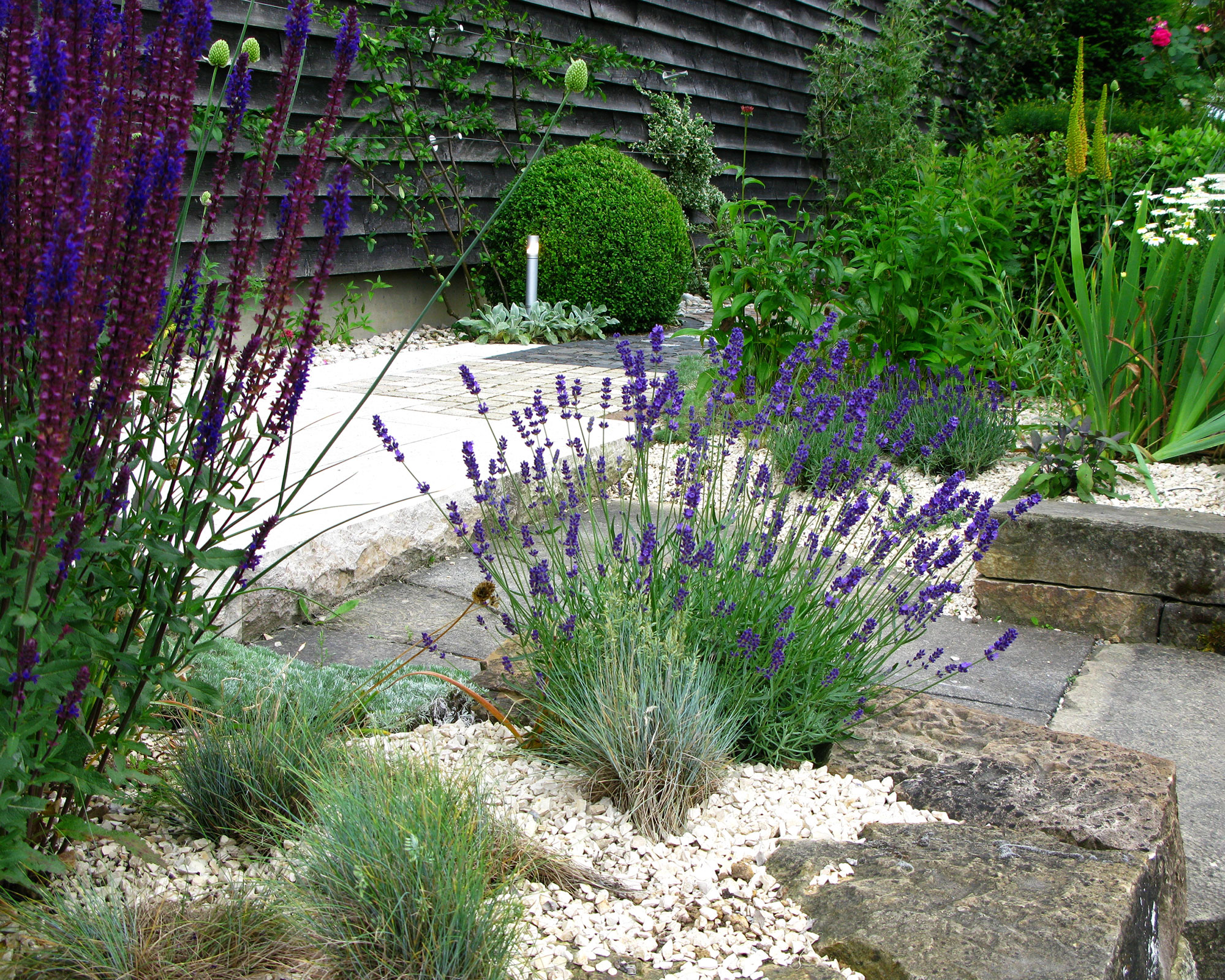
The best coastal plants: 21 plants for seaside plots
If you live by the ocean and want to ensure your garden is full of plants that will flourish in what can often be challenging conditions, our edit of the best coastal plants is a great place to start your plant selection.
1. Echium pininana
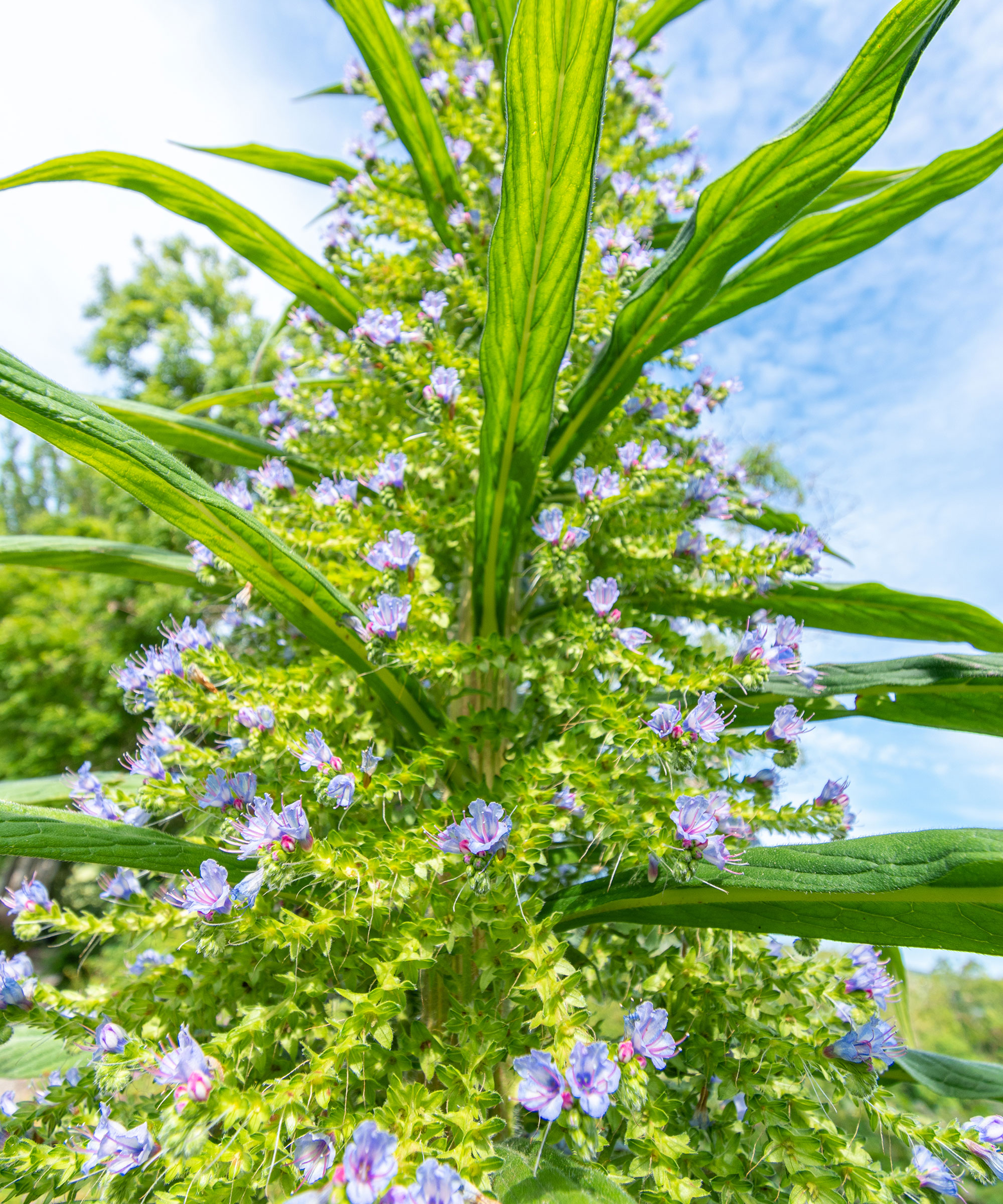
The exceptionally tall flower spikes of the giant echium are packed with either rose colored or purple-blue flowers. The hairy leaves help plants withstand tough environments but mild winters are needed for two to three years while rosettes of growth reach flowering size, throwing tall panicles up into the sky. Height: 11.8ft (3.6m).
2. Geranium palmatum
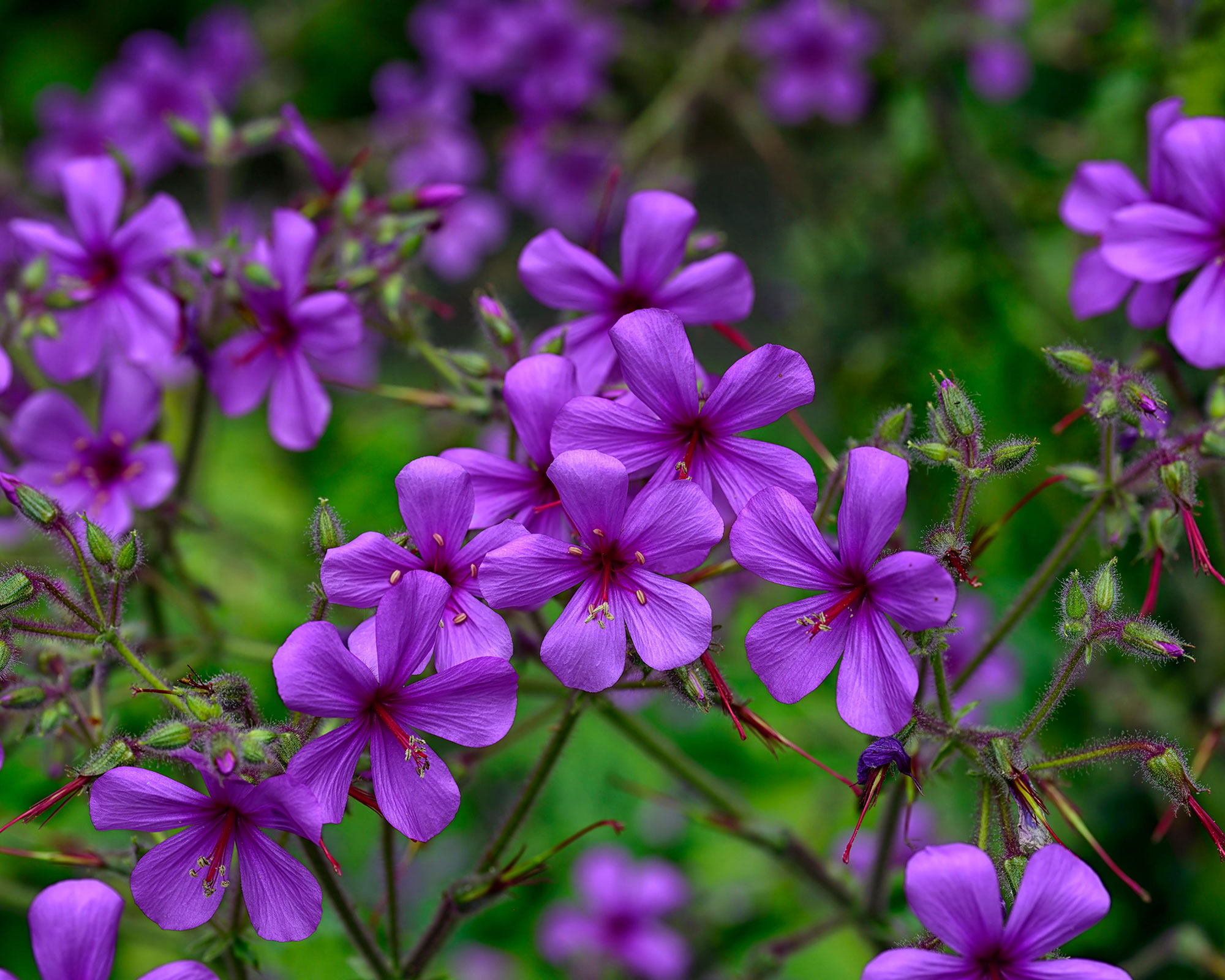
The Canary Island geranium has magenta flowers that bloom reliably from June to September. Valued for its impressive, often evergreen, foliage that can also develop a red flush in winter, this will often self-seed in the right setting.
Native to Madeira and the Canary Islands, it can be perennial if grown in milder regions or sheltered gardens, provided the soil is not too heavy and wet. Eventual height is 35in (90cm).
3. Yellow horned poppy
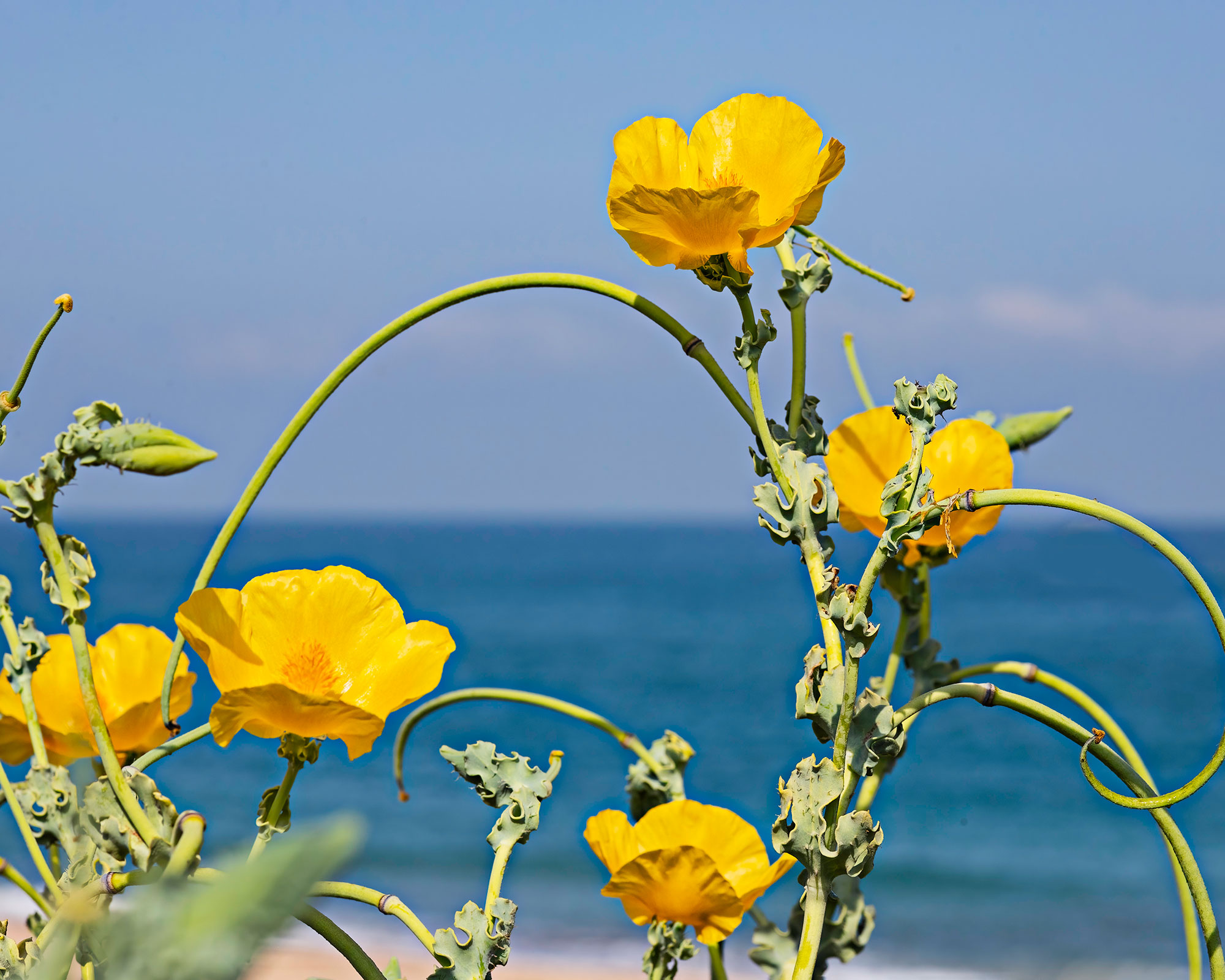
The pretty yellow horned poppy (Glaucium flavum) is often found on shingle beaches. The large flowers open in summer against handsome rosettes of blue green leaves. It's best grown from seed sown direct in the soil in autumn or spring. You can also collect your own seeds from the long curving seed pods. Height: 23in (60cm).
There's lots of tips on how to grow flowers from seed in our guide.
4. Erigeron glaucus ‘Sea Breeze’
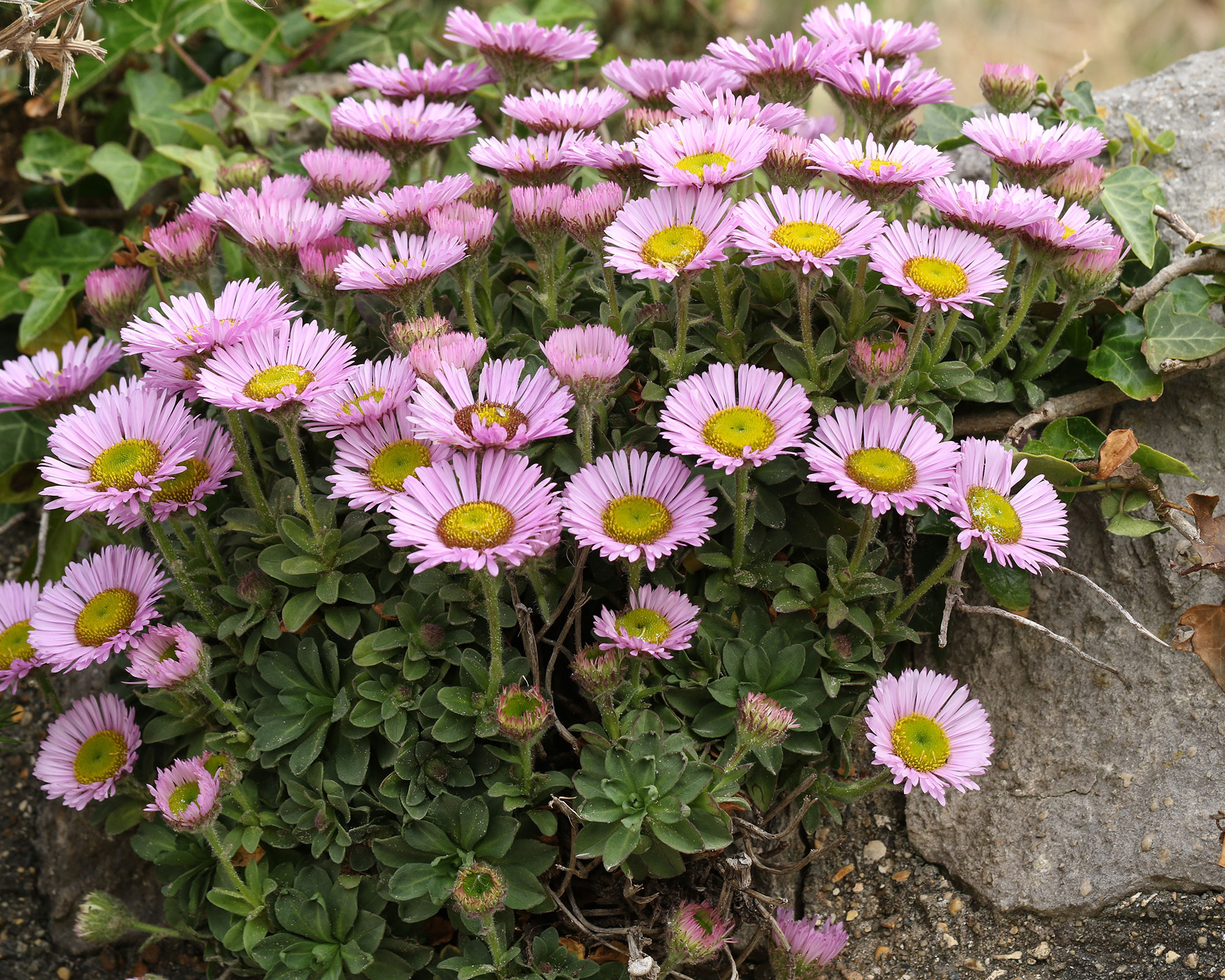
A long flowering variety of the perennial Californian beach aster (also known as fleabane) whose succulent stems of glaucous leaves are perfect for drought-tolerant, weed-smothering carpets lit by lilac-pink daisies throughout summer.
It’s a self-seeder, so will quickly fill cracks and crevices in any free-draining soil. Butterflies love it too. Divide or take cuttings from plants in spring. Height is 12in (30cm).
5. Phormium cookianum ‘Cream Delight’
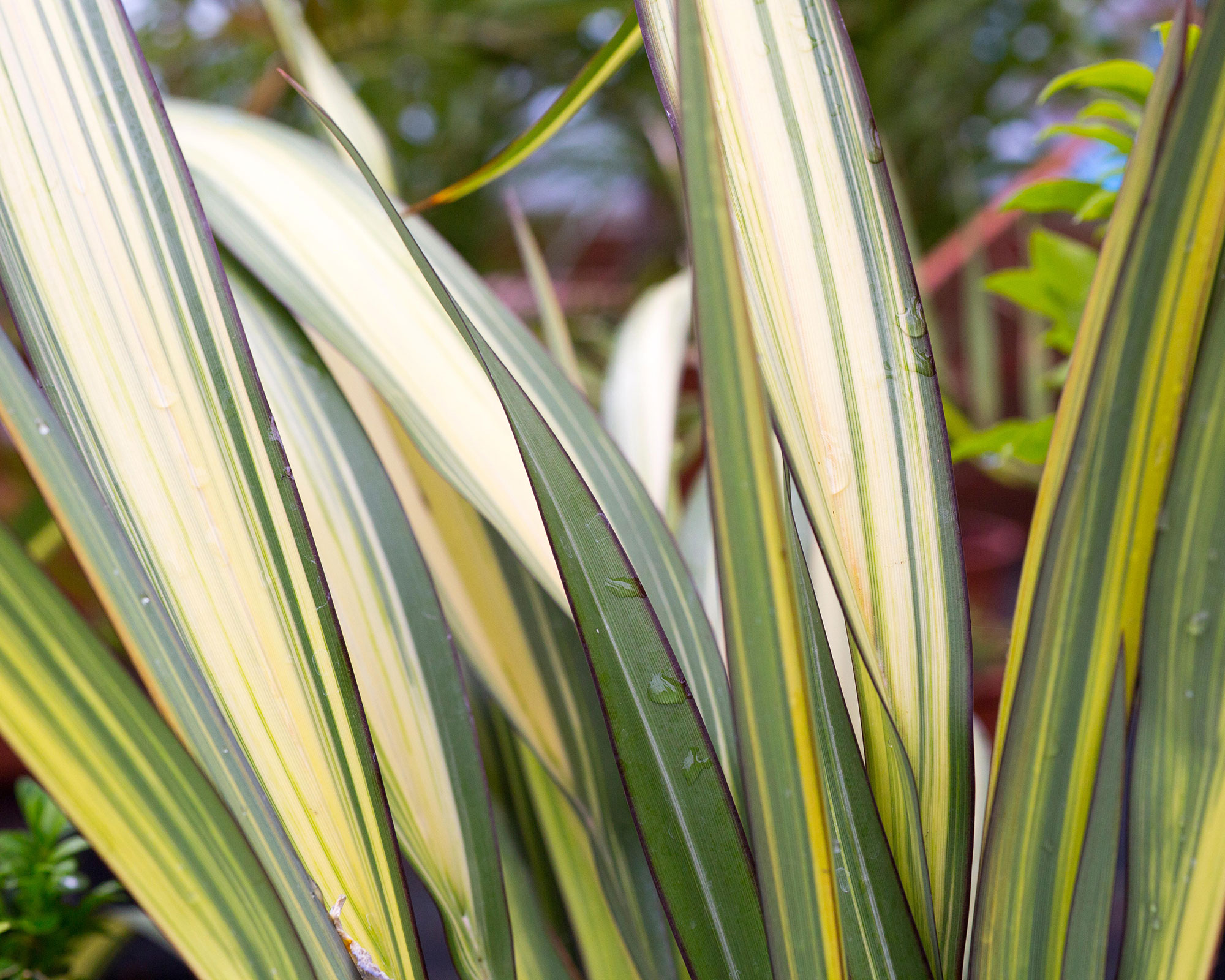
Native to New Zealand, Phormium (also known as flax) are easy to grow in a sunny location in most moist, fertile but free draining soils and add a superb evergreen, architectural effect, making this plant a great option for tropical garden ideas.
They do well by the sea and can eventually grow huge. This variety is more modest in size, with bold arching evergreen, sword-like leaves of green with cream centers and smart maroon rims. Height: 35in (90cm).
6. Agapanthus ‘Silver Mist’
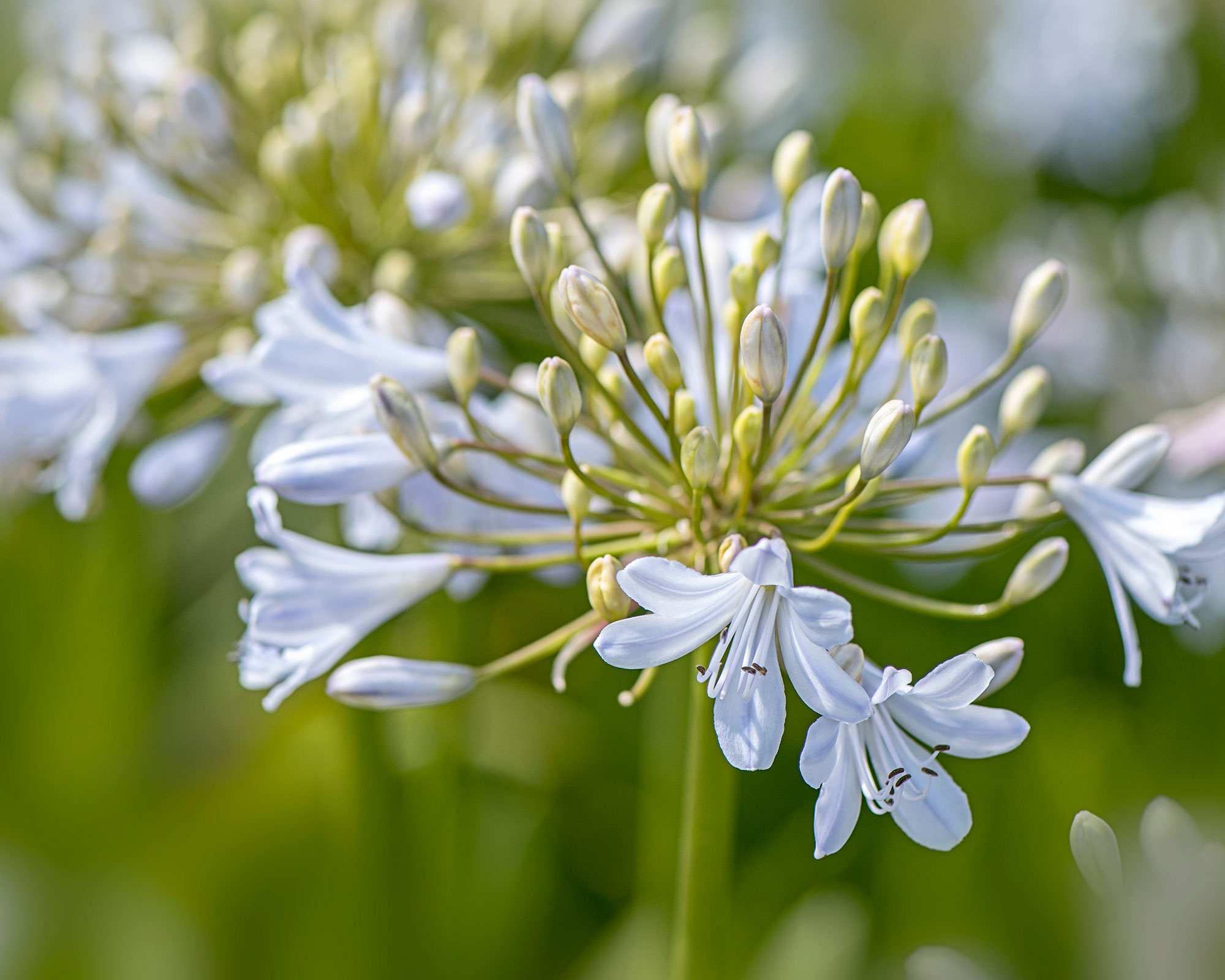
It's worth learning how to grow agapanthus (also known as African lilies) if you live in a beachside location and have a coastal garden. They like full sun and moist, well-drained soil. ‘Silver Mist’ is a semi-evergreen perennial with shimmering silvery-blue flowers and withstands cold winters in heavy soil. Height: 35in (90cm).
7. Olearia x scilloniensis ‘Master Michael’
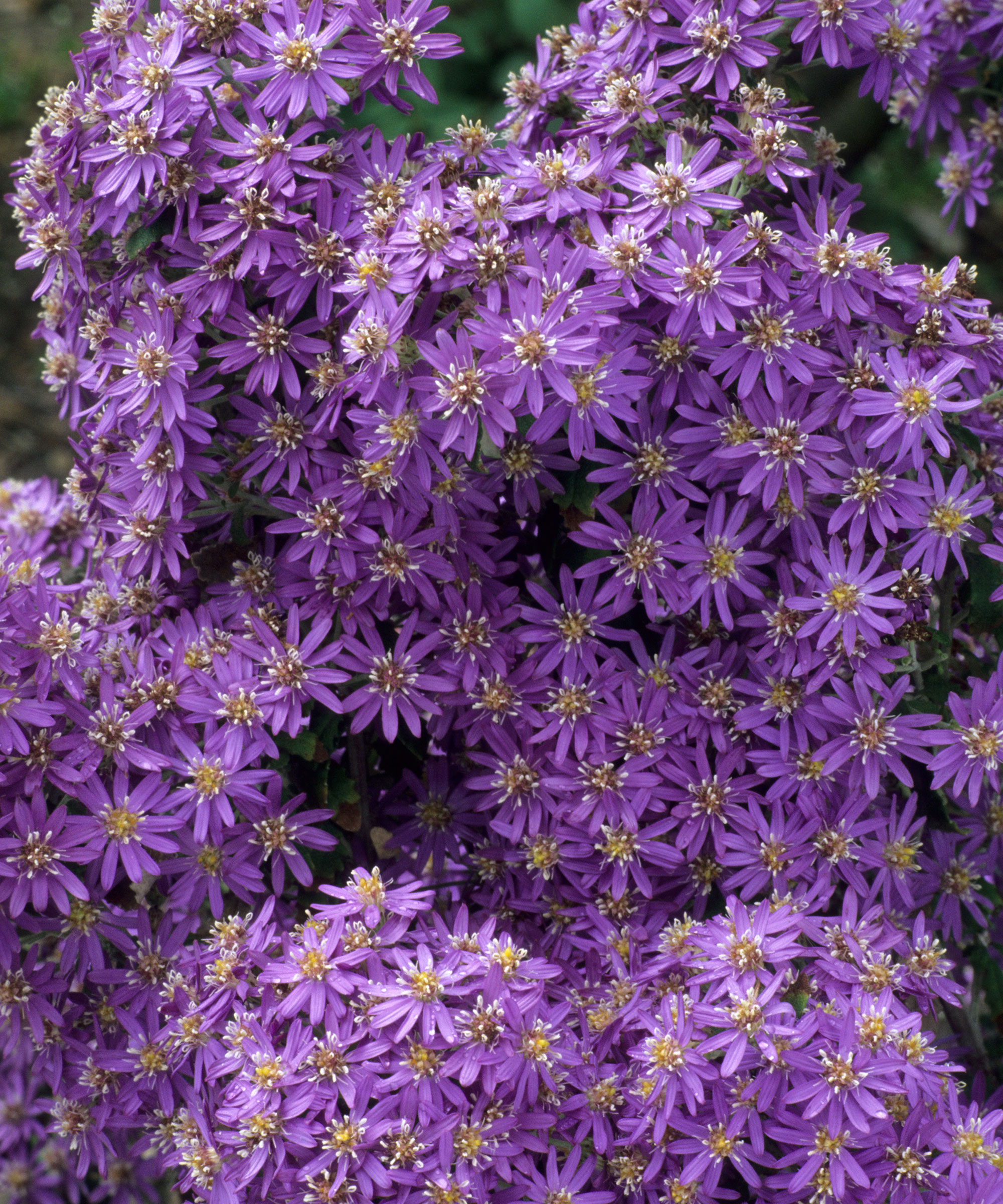
This is a rounded evergreen shrub whose wavy-edged leaves are grey-green above and like pale felt beneath. Late spring brings clusters of handsome purple daisies.
It thrives in full sun with well-drained slightly poor soil and is ideal for coastal sites and chalky soils. Unusual and hardy to 14°F (-10°C) on very well-drained soils. Prune lightly after flowering to maintain compact growth. Height: 5ft 9in (1.8m).
8. Ozothamnus rosmarinifolius ‘Silver Jubilee’
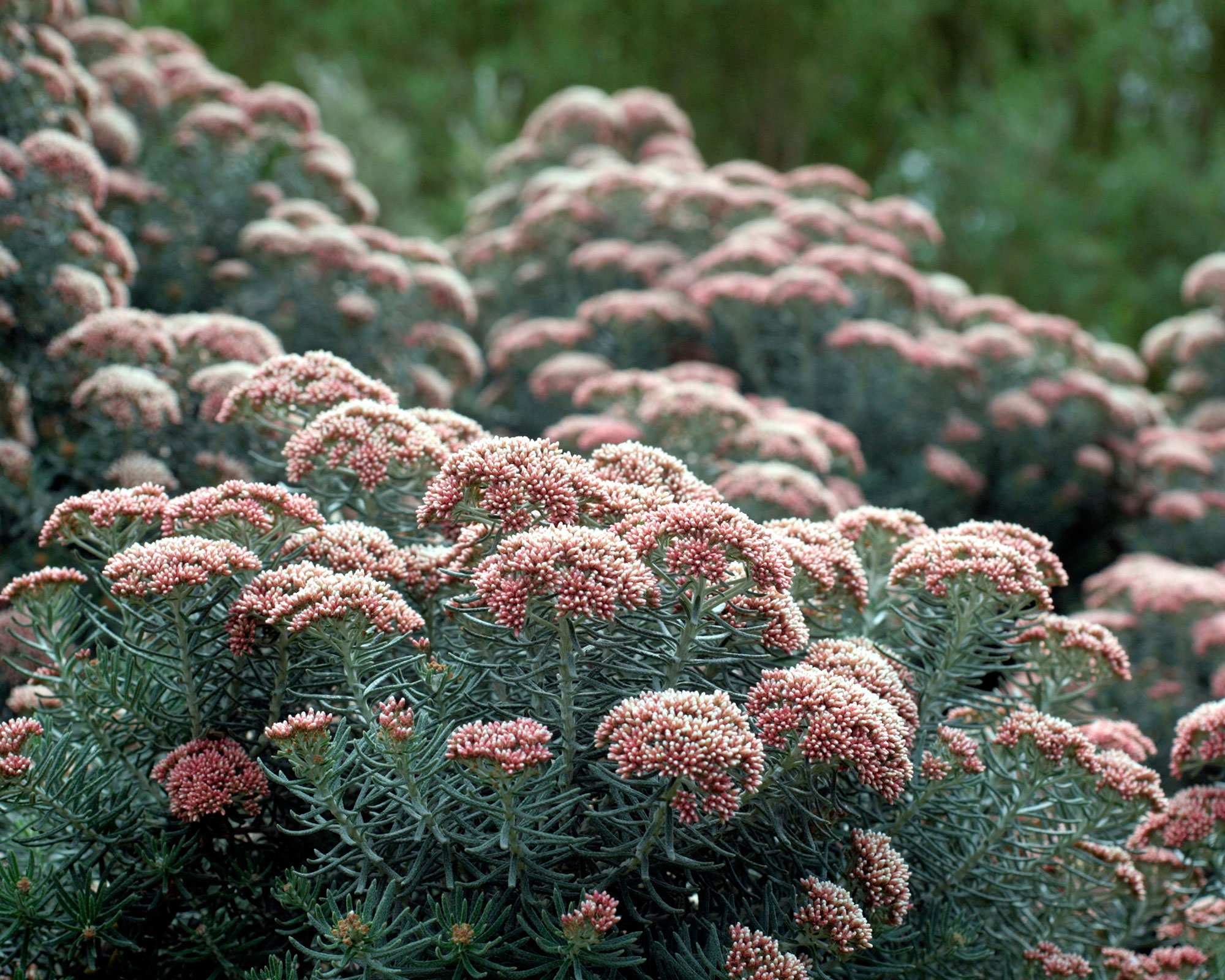
Also known as sea rosemary, this upright Australian evergreen shrub flourishes despite harsh winds as long as there’s good drainage. Silvery-grey needle-like foliage is joined by clusters of small fragrant white flowers opening from red buds in summer. Height: 5ft 9in (1.8m).
9. Pinus heldreichii ‘Compact Gem’
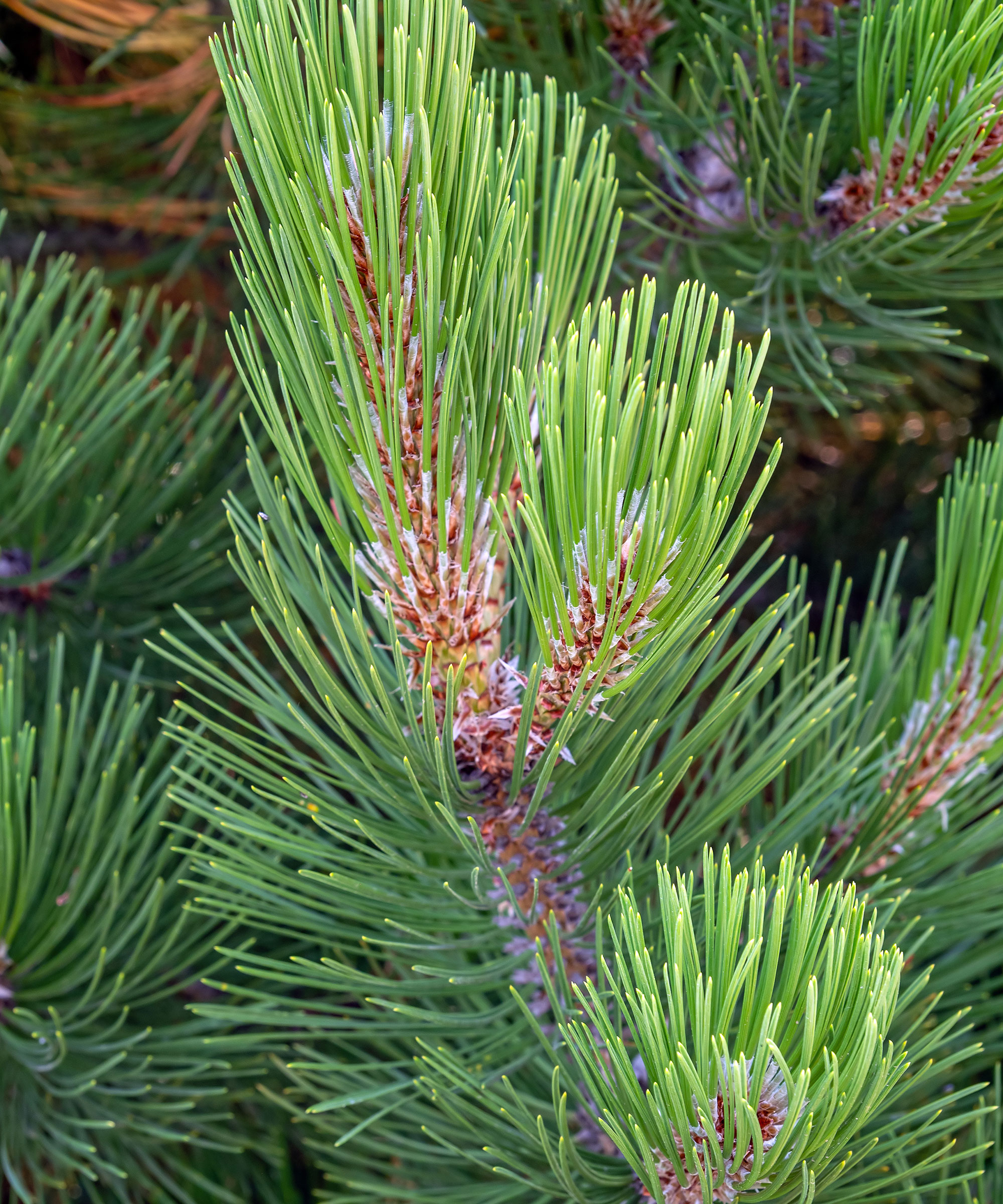
A small and attractive but slow-growing and very hardy pine tree that's ideal for both container gardening ideas and for planting out. Gradually makes a compact rounded cone-shaped plant with long, dark green needles. It forms attractive cones and grows best in full sun. It’s a good choice for gardens with limited space. It also goes by the name Bosnian pine. Height: 9ft 8in (3m).
10. x Halimiocistus wintonensis ‘Merrist Wood Cream’
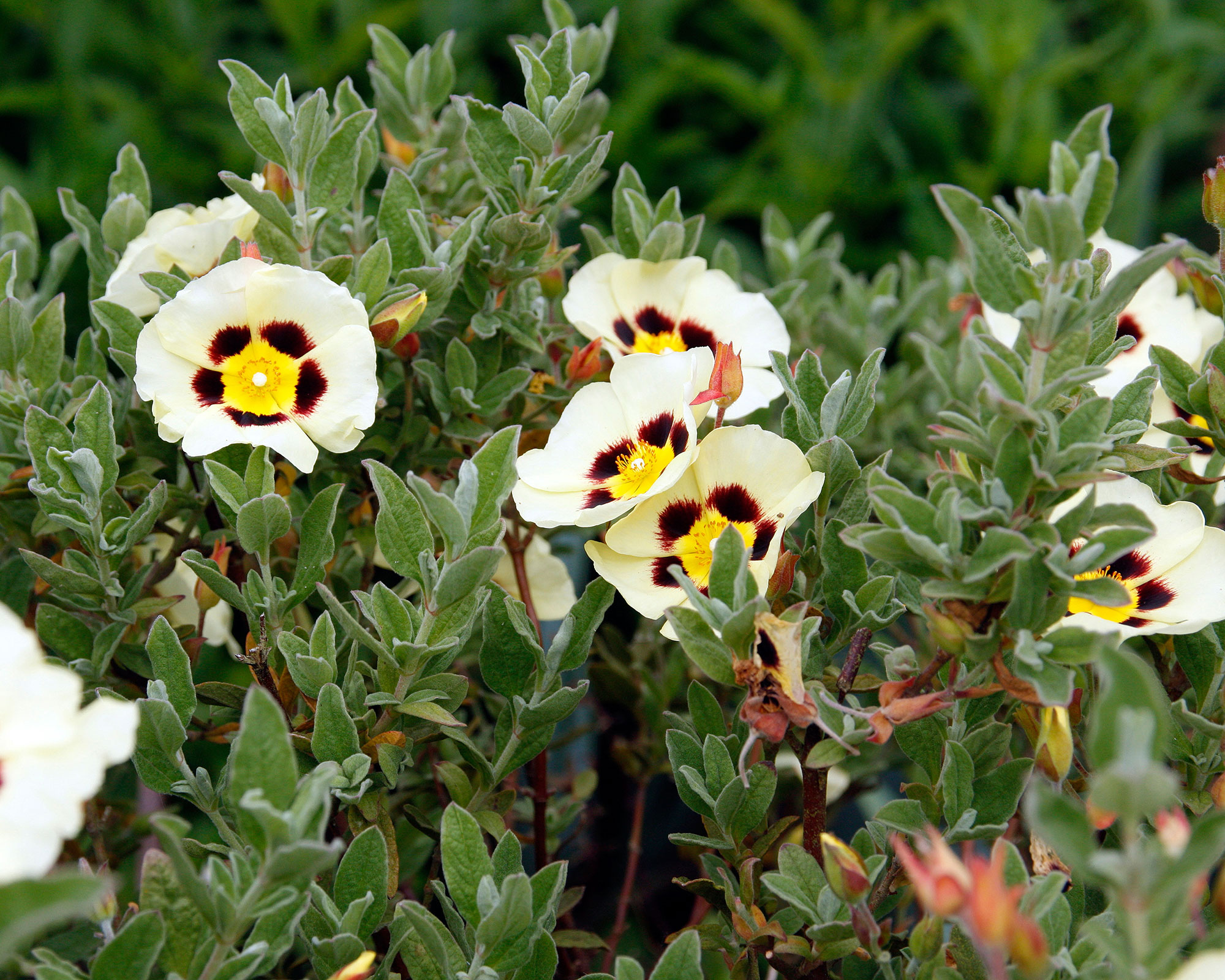
An evergreen shrub whose grey green leaves have a shimmering appearance highlighted in May and June by creamy-yellow flowers marked at the centre with a deep heart of dark maroon. Also known as rock rose, it flourishes in full sun and dry soils, the typical conditions of Mediterranean gardens. Height: 23in (60cm).
11. Curry plant
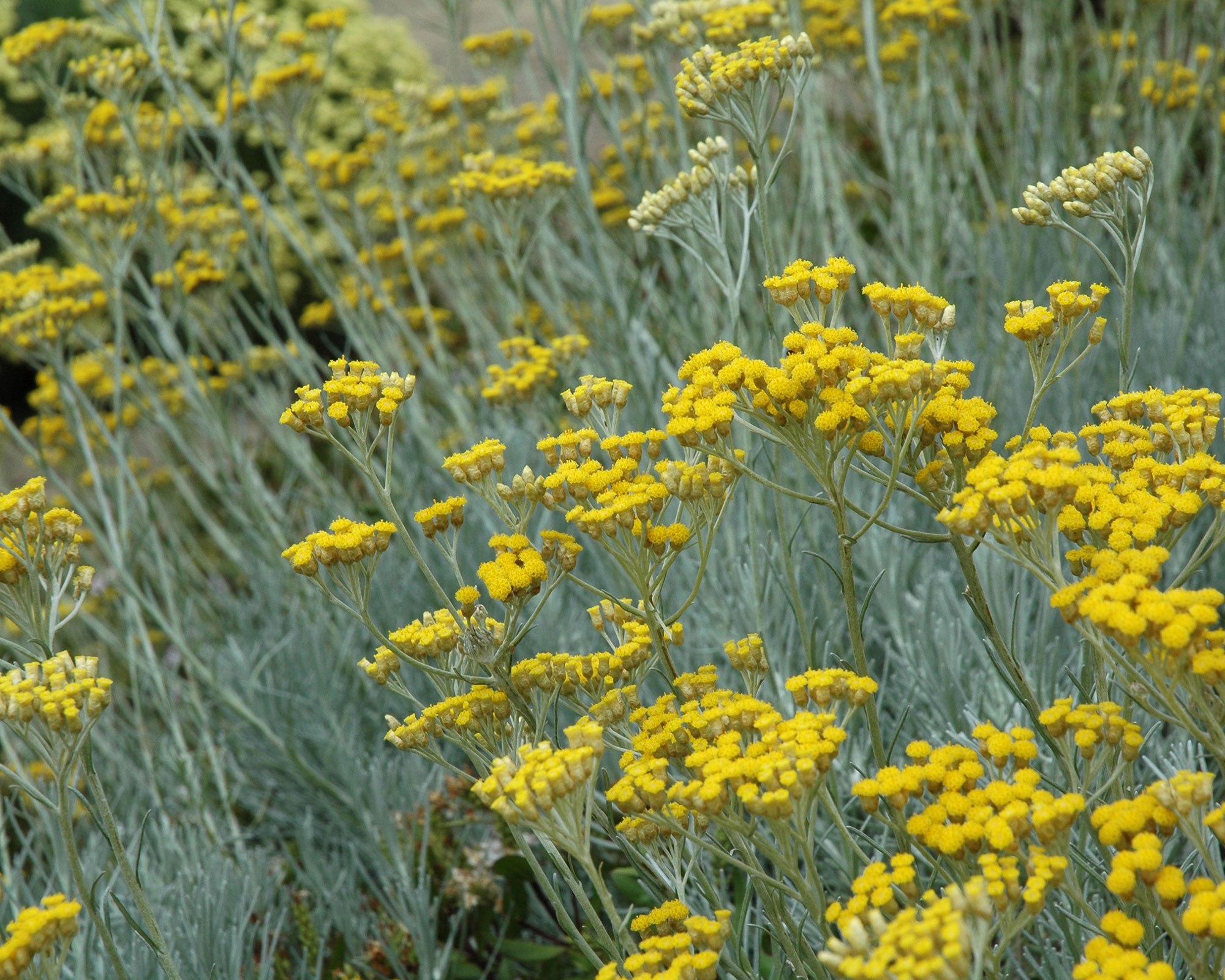
The curry plant (Helichrysum italicum subsp.serotinum) has a compact structure and fragrant curry aroma. Trim regularly for soft mounds of attractive silvery feathered leaves.
It prefers full sun, or partial shade with free-draining soil or compost. A hardy plant that will survive normal winter conditions outside. Helichrysum splendidum is a taller variety, while Santolina chamaecyparissus is a good alternative if you dislike the smell of curry. Height: 15in (40cm).
12. Sea campion
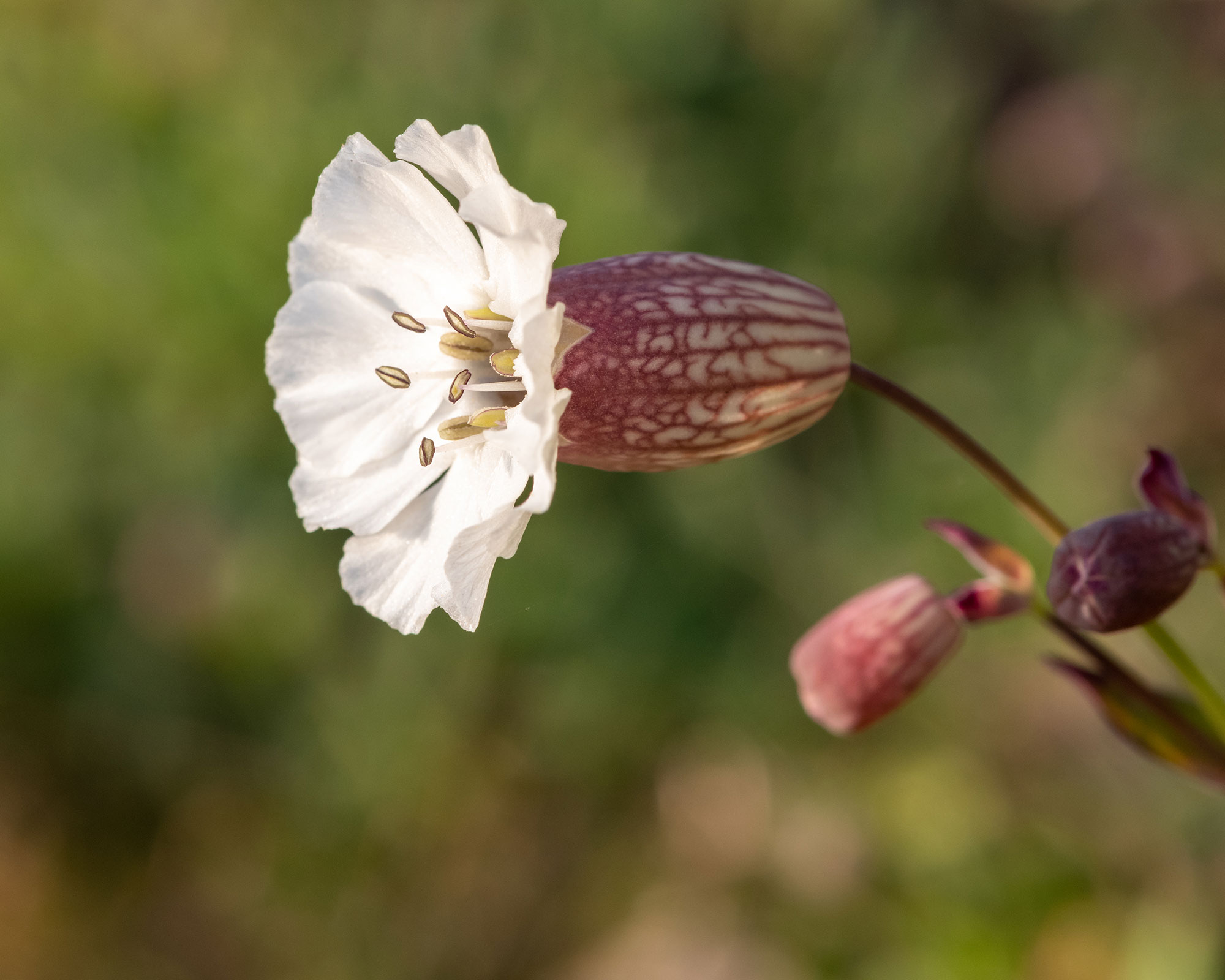
Sea campion (Silene uniflora) is a low-growing mat-forming perennial whose semi-evergreen clumps suit small rock gardens, containers, raised garden beds and gravel gardens.
As a coastal plant it’s tolerant of sandy conditions but also very rich soils, and does well in sun and some shade. In summer, the white flowers have deeply cut petals. Shear back after flowering to keep growth compact. Height: 6in (15cm).
13. Sea holly (Eryngium x zabellii ‘Blue Waves’)
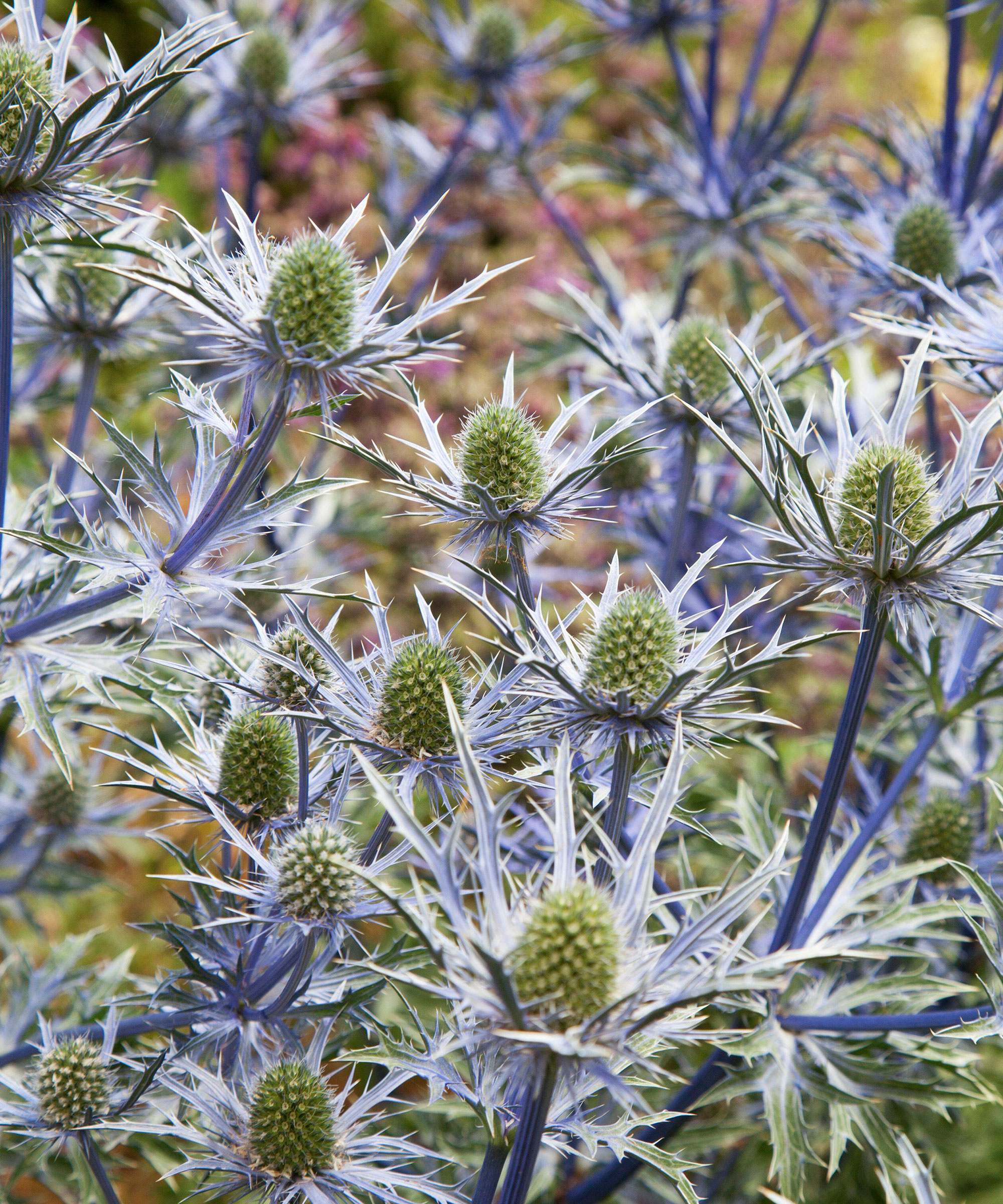
A popular choice for the best coastal plants, the striking silver foliage and architectural blooms of sea holly, with its prickly cone-like heads, will add texture to your garden borders. It copes in the sandy soils common in seaside gardens.
A hybrid between the two classics Eryngium bourgatii and Eryngium alpina, this perennial has long-lasting displays of flowers from early summer. Height: 30in (75cm).
14. Sea kale
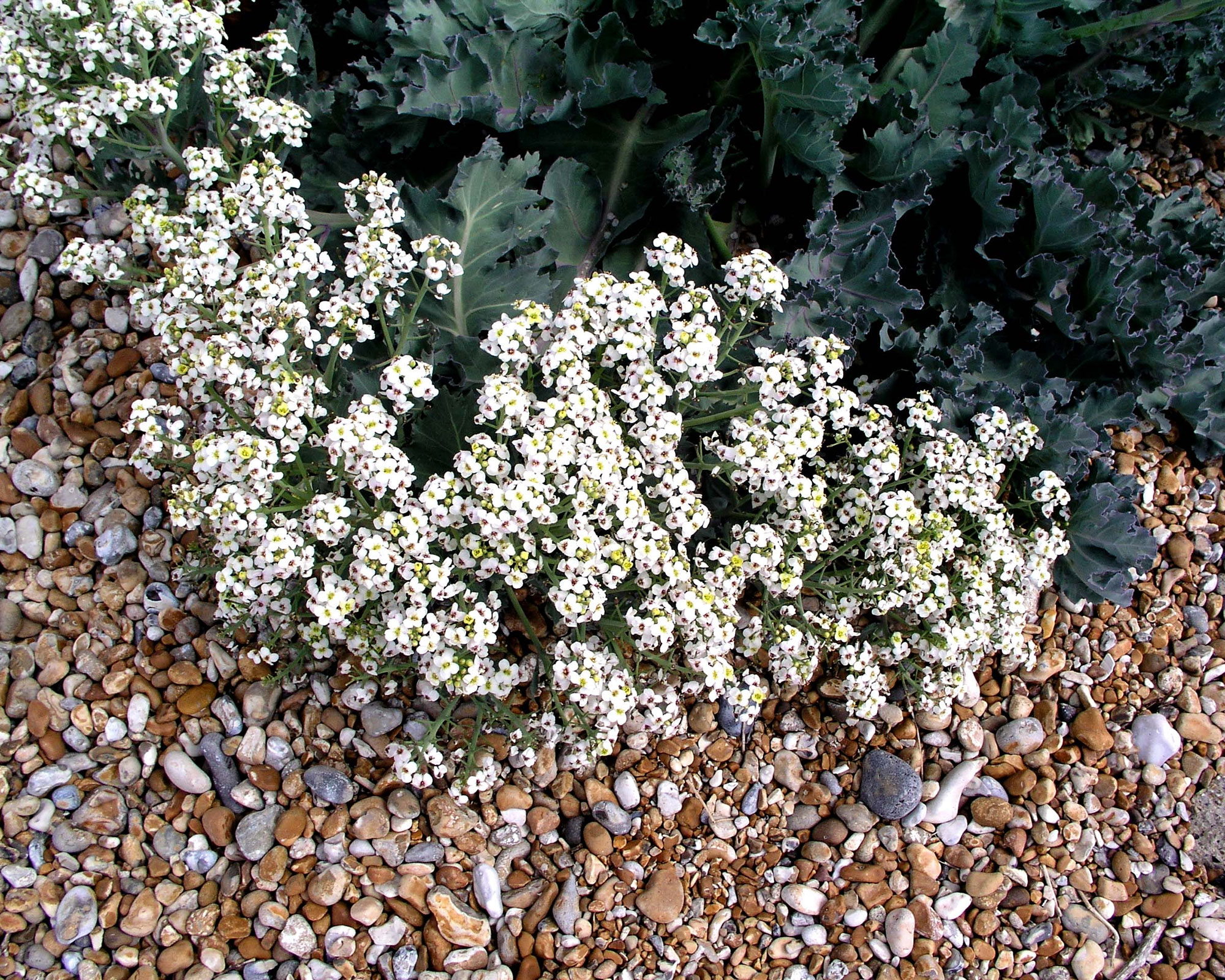
For classic seaside charm, sea kale (Crambe maritima) is one of the best foliage plants with its crinkly silvery-green leaves. It dies down over winter, but shoots up again in spring. In early summer, you'll find it covered in small white flowers, which are popular with pollinators. Although ‘forced’ for tender young shoots to eat, sea kale is even better grown as an ornamental plant. Height: 29in (75cm).
15. Sea lavender (Limonium latifolium ‘Violetta’)
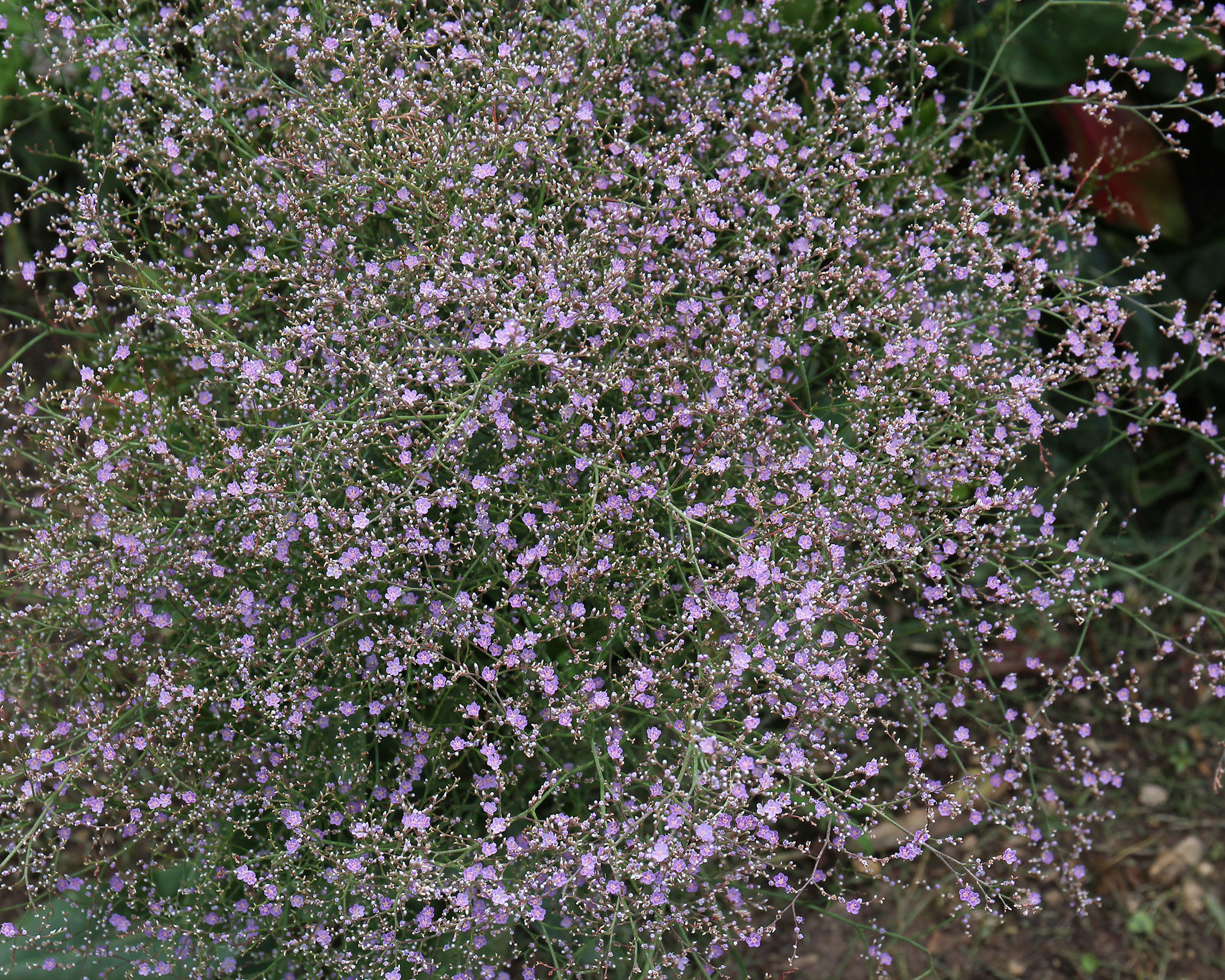
An herbaceous perennial whose low, spoon-shaped leaves emerge in spring and are joined by sprays of tiny deep violet flowers growing abundantly along spikes in late summer.
Sea lavender (Limonium latifolium ‘Violetta’) likes a sunny spot, appreciates being watered fully before planting and is fully hardy. Height: 23in (60cm).
16. Sea lungwort
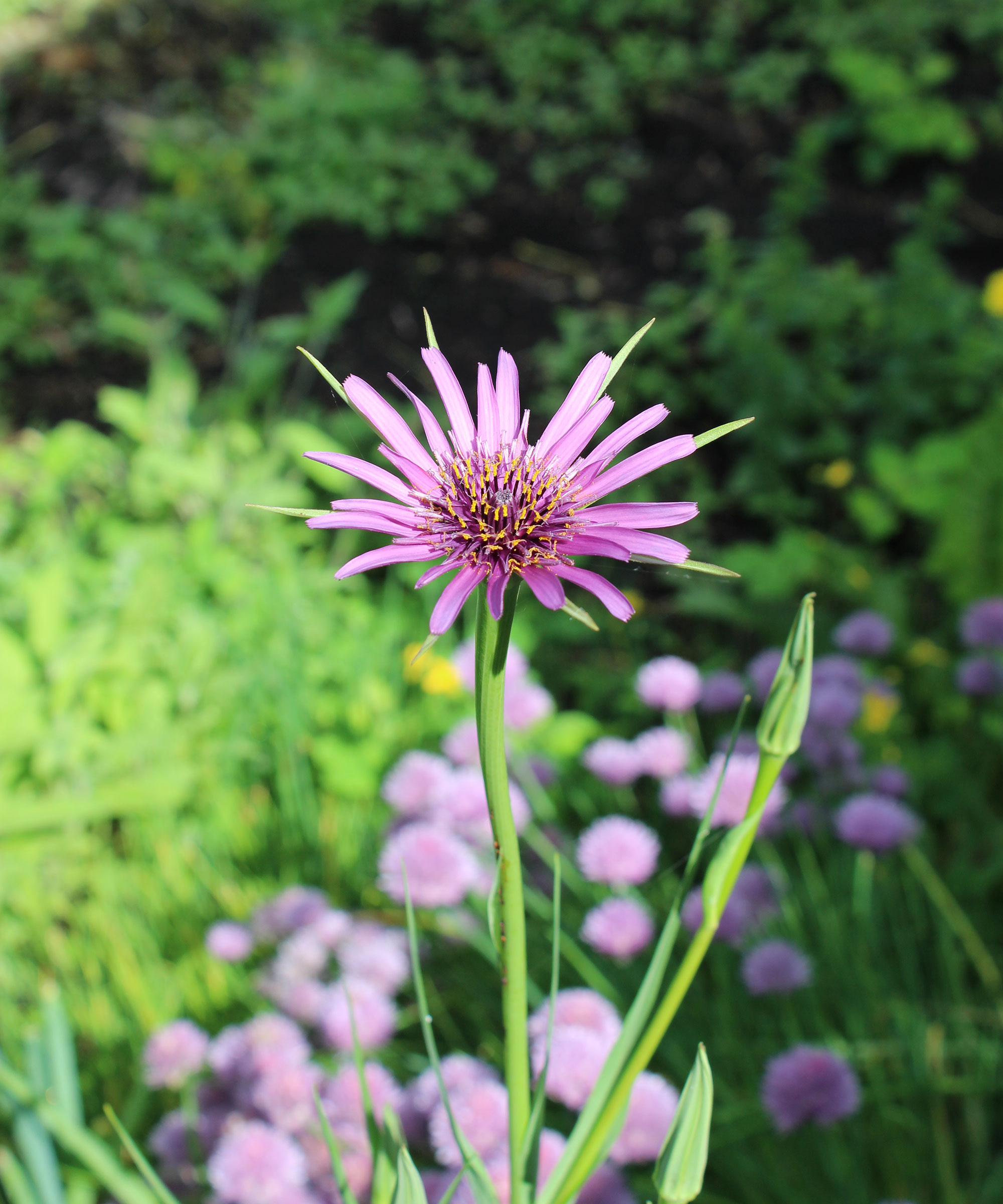
The beautiful perennial sea lungwort (Mertensia maritima) grows on sand, gravel and shingle beaches, thriving happily in poor, gritty soil. This makes it the perfect choice if you're looking for a planting option to complement your garden gravel ideas as it grows close to the ground with a spreading habit.
The attractive hardy herbaceous perennial is also known as the oyster plant. In summer it has clear blue, bell-shaped flowers. Height: 12in (30cm).
You can find more of the best ground cover plants in our guide.
17. Pittosporum tenuifolium ‘Golf Ball’
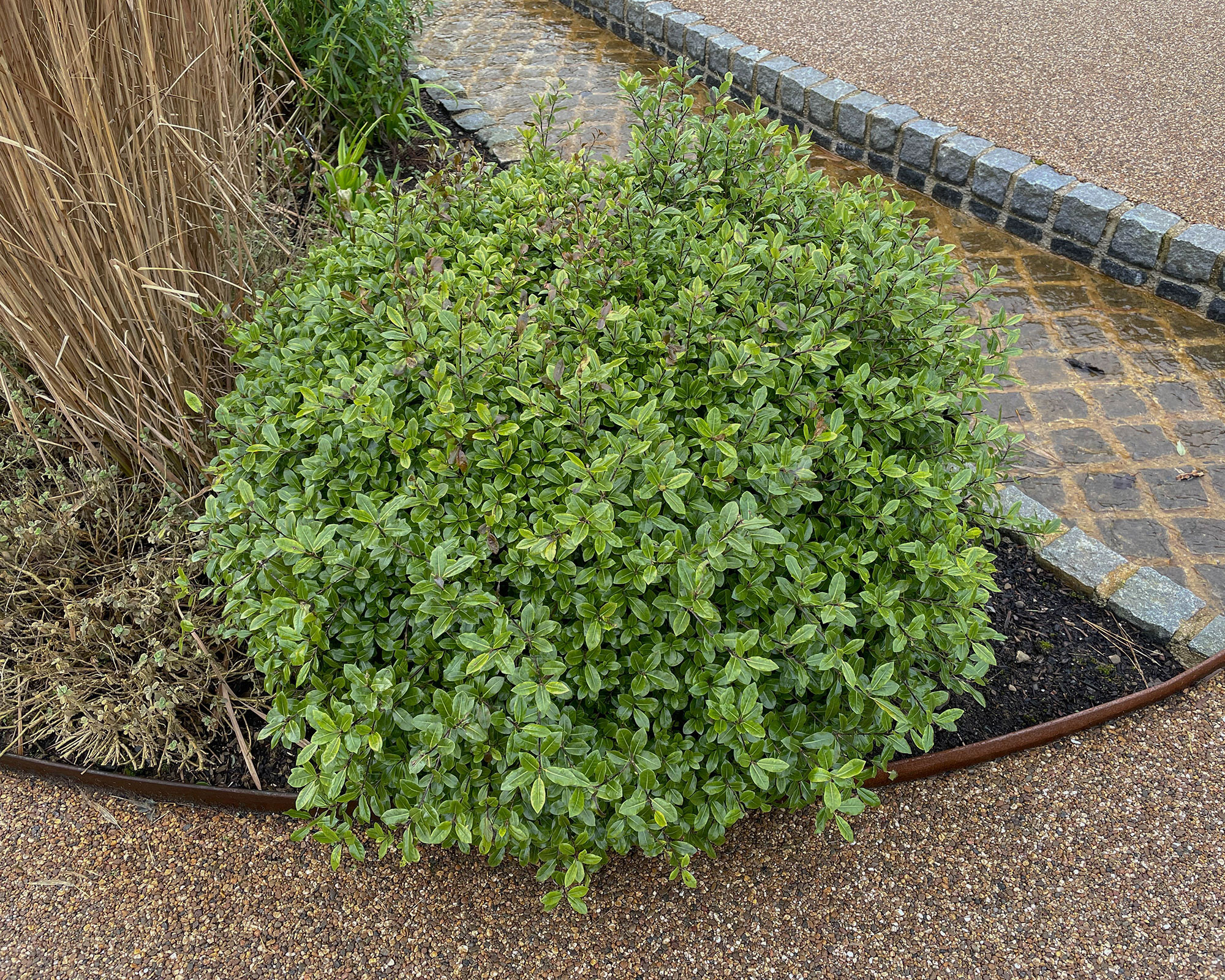
A great shrub to use as a windbreak in exposed coastal gardens. This variety of pittosporum can be clipped into shape like box. Forming a neat, rounded mound, this evergreen shrub is ideal for adding structure and architectural interest to the planting scheme as well as being suitable for garden screening ideas.
The fresh mint green leaves are complemented by small brownish-purple flowers in late spring and early summer, filling the air with a honey-like scent. Height: 4ft (1.2m).
18. Cordyline australis (cabbage palm)
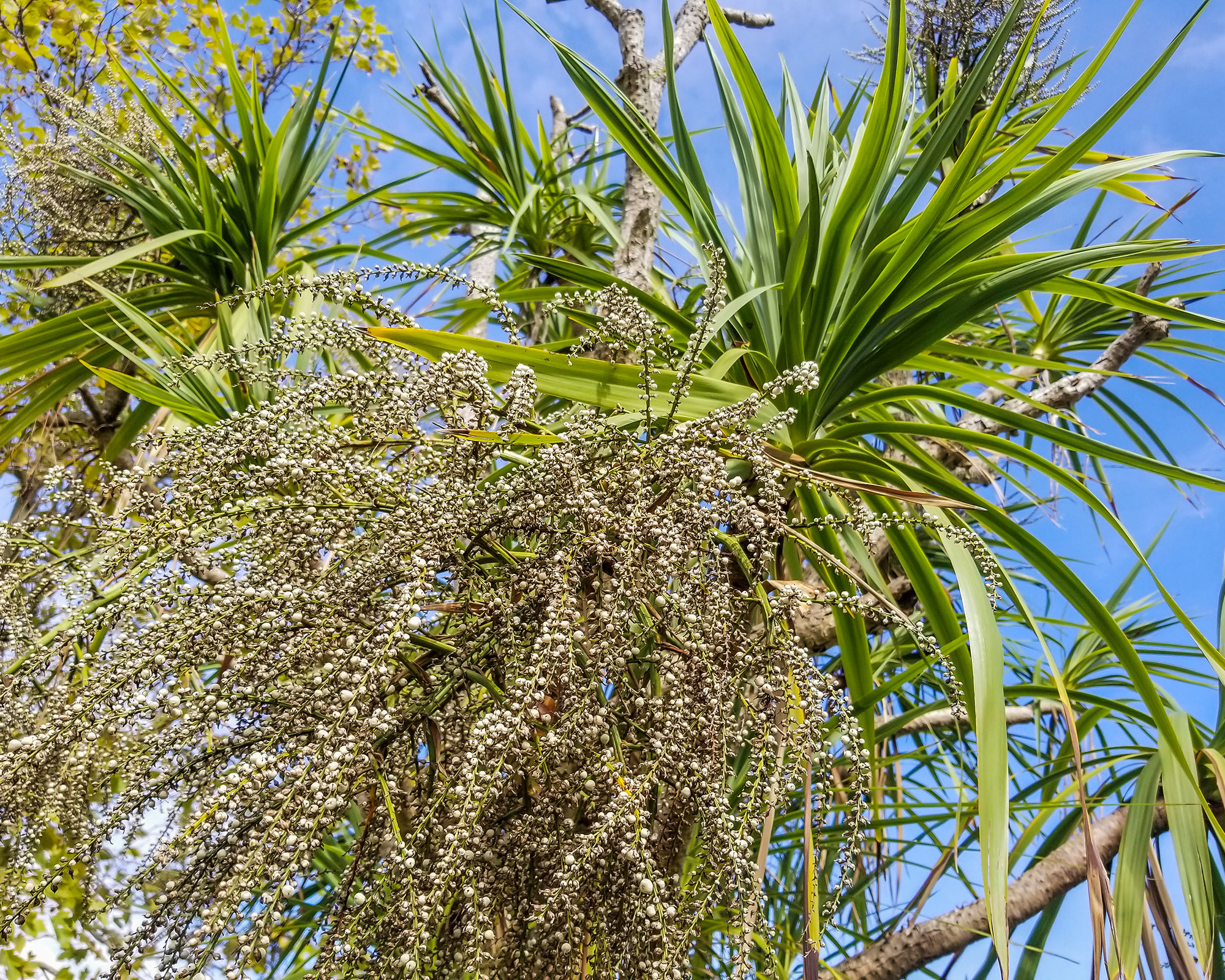
This architectural plant is a striking evergreen that has the appearance of a small palm tree to add an exotic atmosphere to a coastal style garden. In summer, the large panicles of small cream flowers have a lovely scent too. Height: 8ft (2.5m).
19. Festuca glauca ‘Elijah Blue’
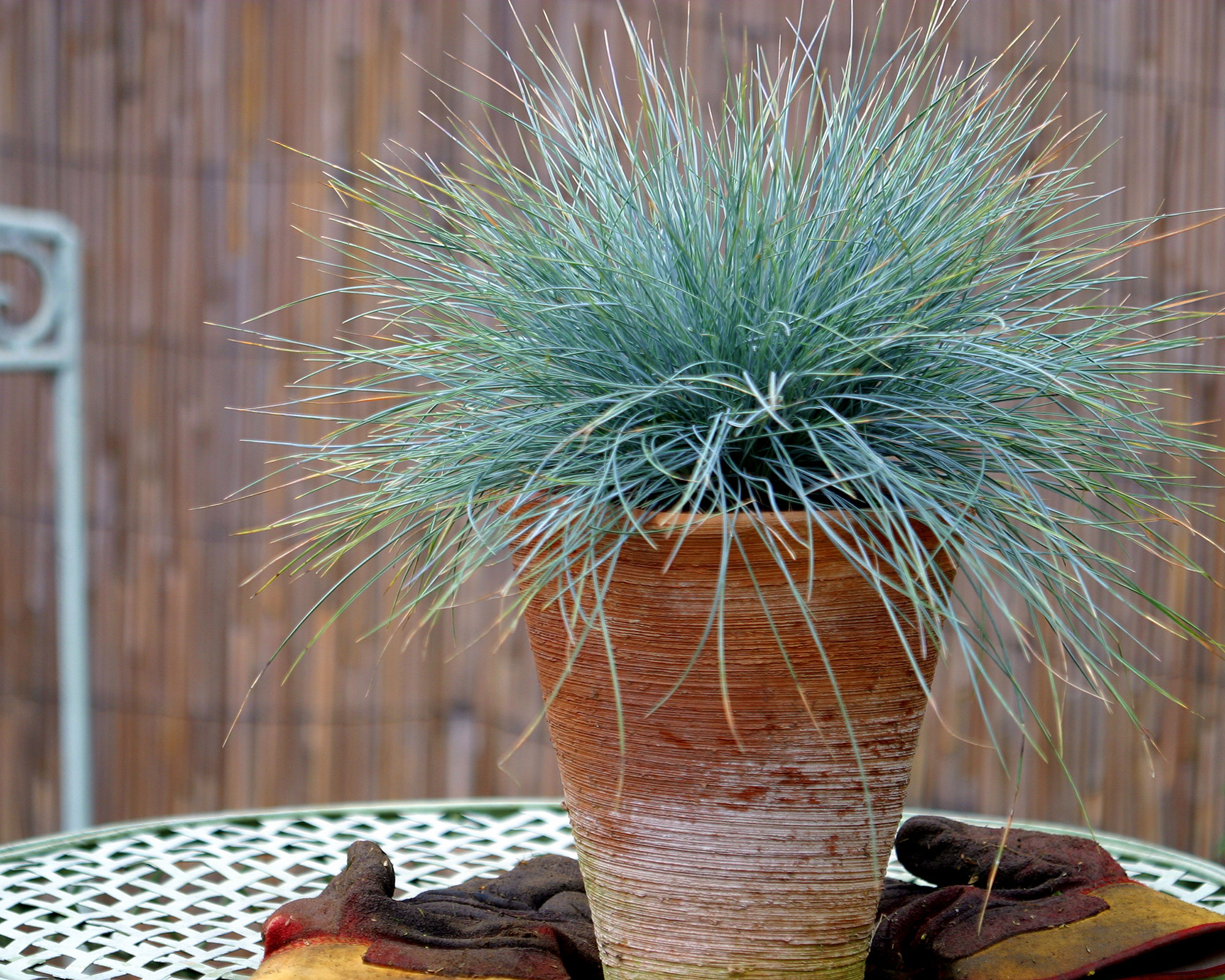
A seaside garden isn’t complete without some soft grass texture to ripple in the breeze. This evergreen is one of the best coastal plants around as it's happy in containers and rock gardens, and can add texture to flowerbeds. When clumps are planted separately among gravel and pebbles, it can have a really striking impact. It's also one of the best plants for winter pots, introducing a year-round display of texture and color. Height: 12in (30cm).
20. Sea oats
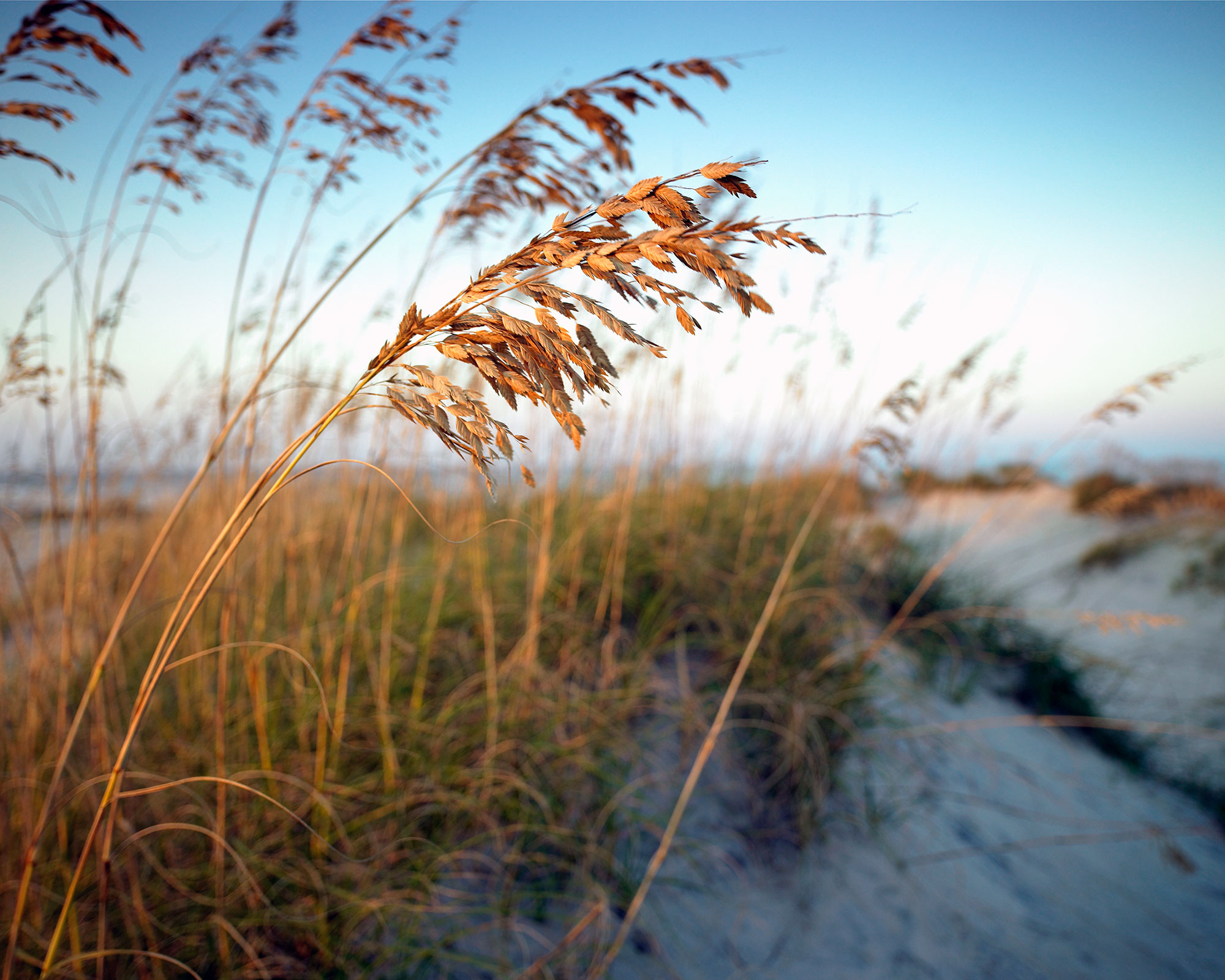
Native to North America, this ornamental grass thrives just about anywhere you plant it (even in shade) and works especially well as a coastal plant. It has seed plumes that dance in the breeze and the foliage turns an attractive bronze in autumn. It can spread pretty quickly so be sure to cut off seed heads in late summer. Zones: 4-8. Height: 8ft (2.5m).
There's more tips on growing how to grow ornamental grasses in our dedicated guide.
21. Gaillardia
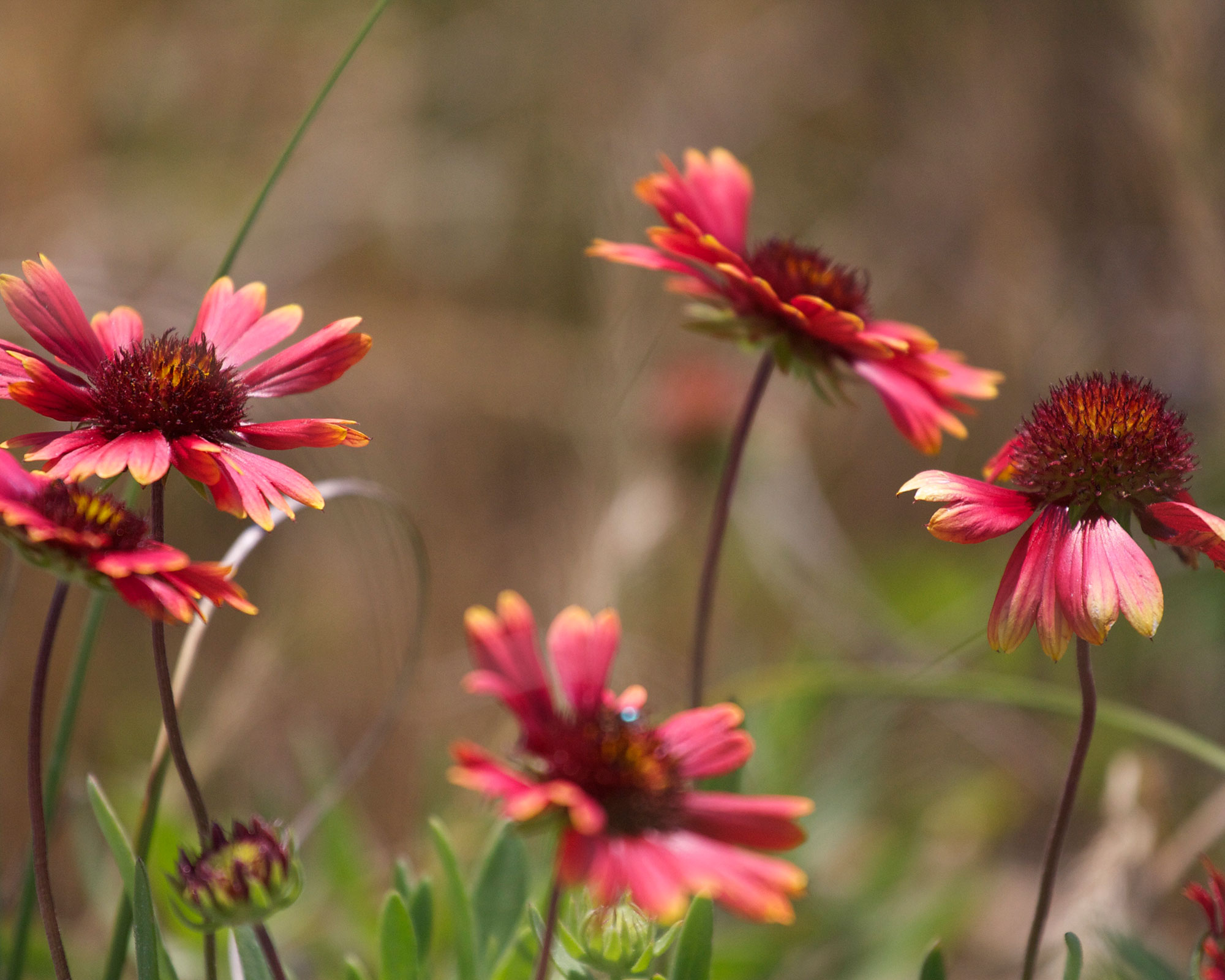
Also known as blanket flower, gaillardia is good for its long season of blooming in seaside gardens, flowering non-stop from summer to first frosts. The masses of fiery red blooms make a real focal point. It’s one of the best drought tolerant plants, and thrives in sandy soil and salty soil around lakes and oceans. It’s also a great cutting flower and attracts scores of butterflies. Zones: 3-10. Height: 3ft (90cm).
What plants grow well on the coast?
Choose the best coastal plants and you can turn a seaside situation to your advantage. If it's exposed to the wind, plant windbreaker shrubs to offer protection.
If a plant has the word 'sea' in its name that should be all the clue you need. Sea holly, sea lavender, sea kale, sea campion, sea thrift... take your pick!
If you are looking to fill a coastal border choose a mix of ornamental grasses, and tall wavy perennials like achillea, verbena and eryngiums.
If you want to learn how to grow succulents in a coastal garden, easy going varieties like aeonium, which are native to Madeira, the Canary Islands and North Africa, are also a good choice for coastal situations.
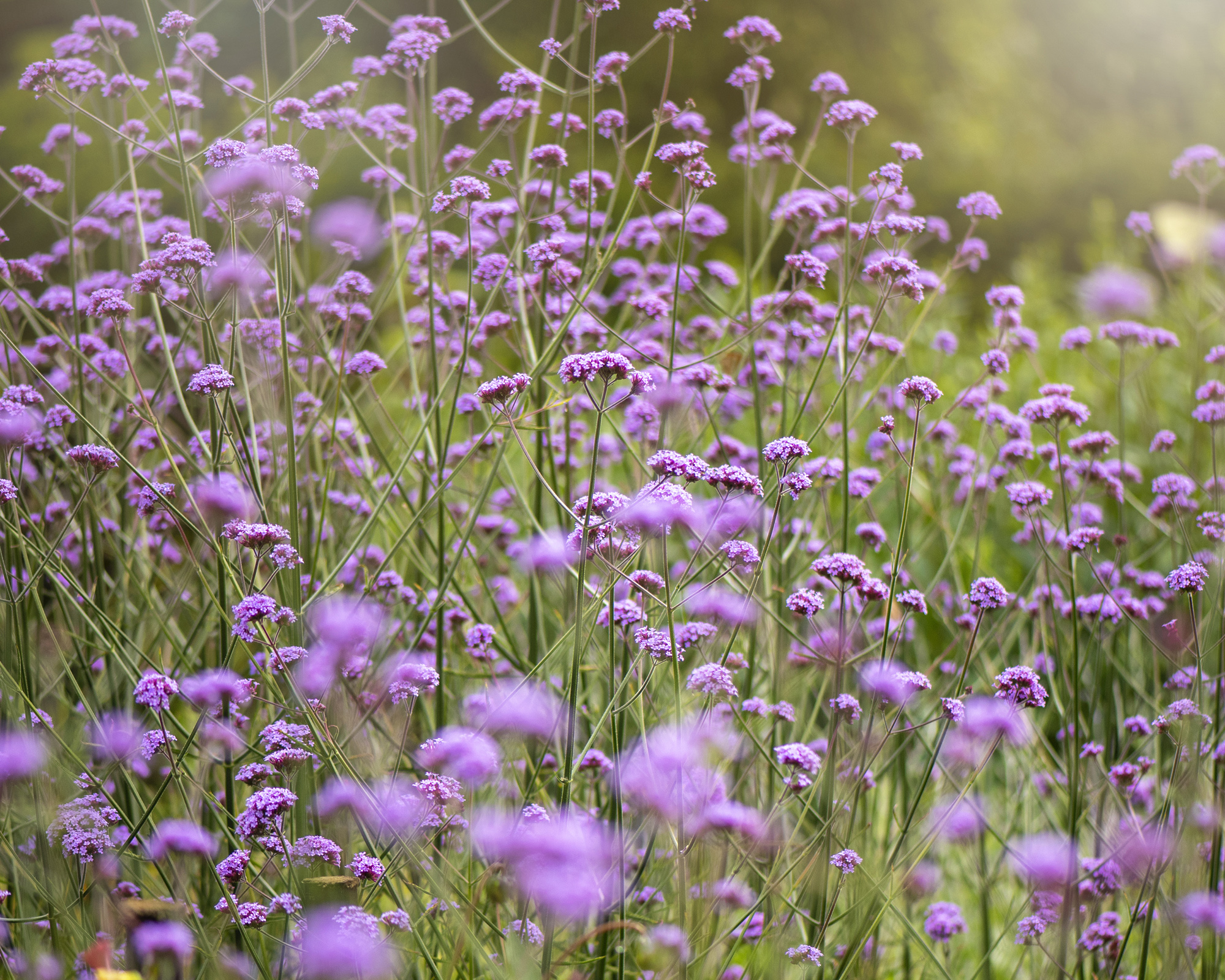
What plants grow well near salt water?
The best coastal plants are ones that are tolerant of exposure to salty sea winds like Cordyline, Elaeagnus and Arbutus. They also need to be tolerant of exposed sites, so try Olearia, Pyracantha and Sambucus nigra if this is the situation you are dealing with.
If the site is an open one, choose shrubs like Buddleja davidii, lavender and Cistus. If you want to use shrubs for protection from sea winds, Pittosporum tenuifolium, Prunus spinosa and Escallonia all work well.
The best coastal plants for rock gardens include allium, helianthus, Nerine bowdenii, Pulsatilla vulgaris and saxifrage.
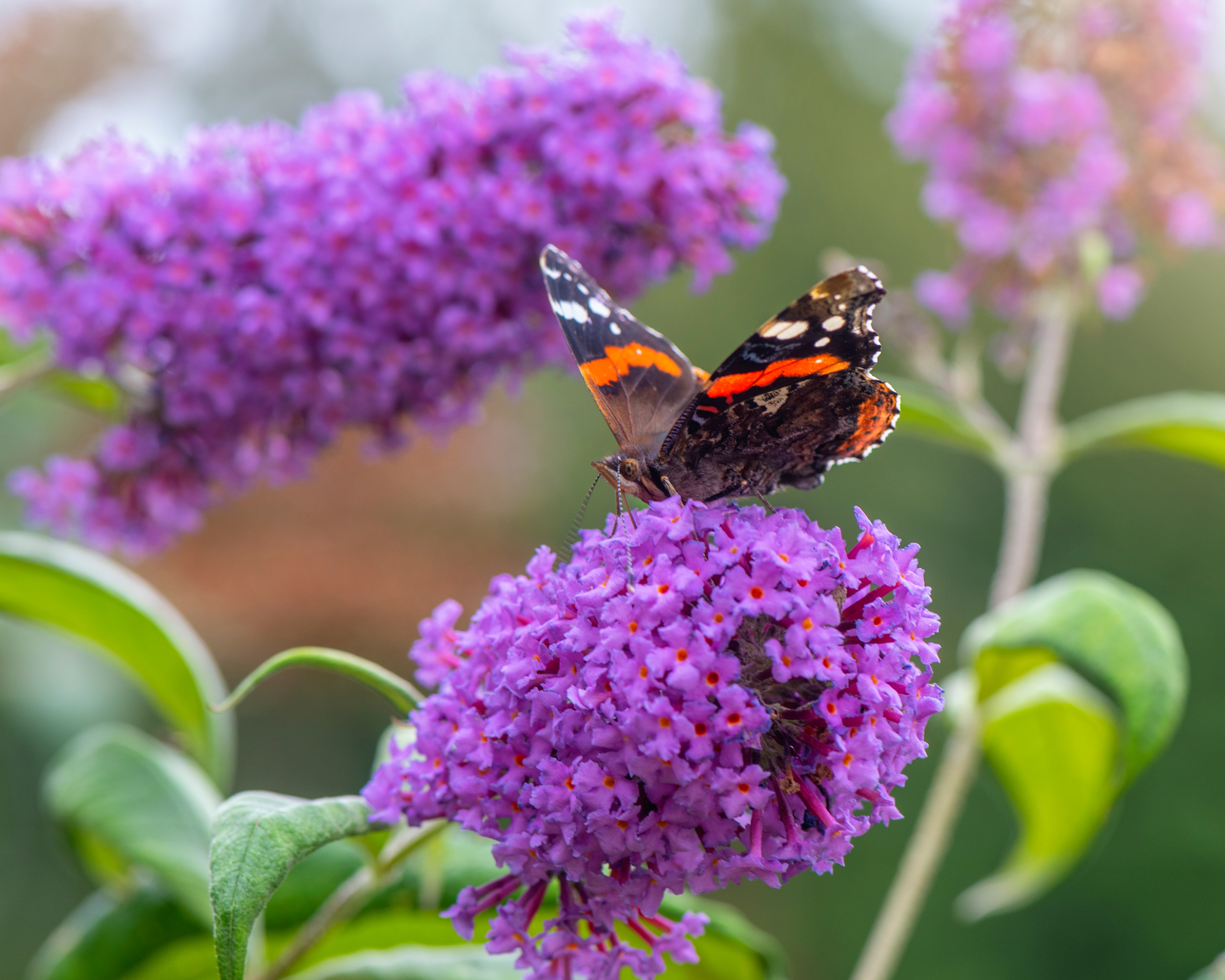
What are the best coastal plants for growing in containers?
Any suitable coastal plant should thrive in garden planters, but make sure the pot has a broad base and adequate drainage. Wind dries compost fast, so place a layer of shingle over the top to retain moisture and weigh pots down.
Felicia amelloides (Kingfisher daisy), showy gazanias and aromatic Sicilian chamomile (Anthemis punctata subsp.cupaniana) are favorites for planting in pots, as well as lavender.
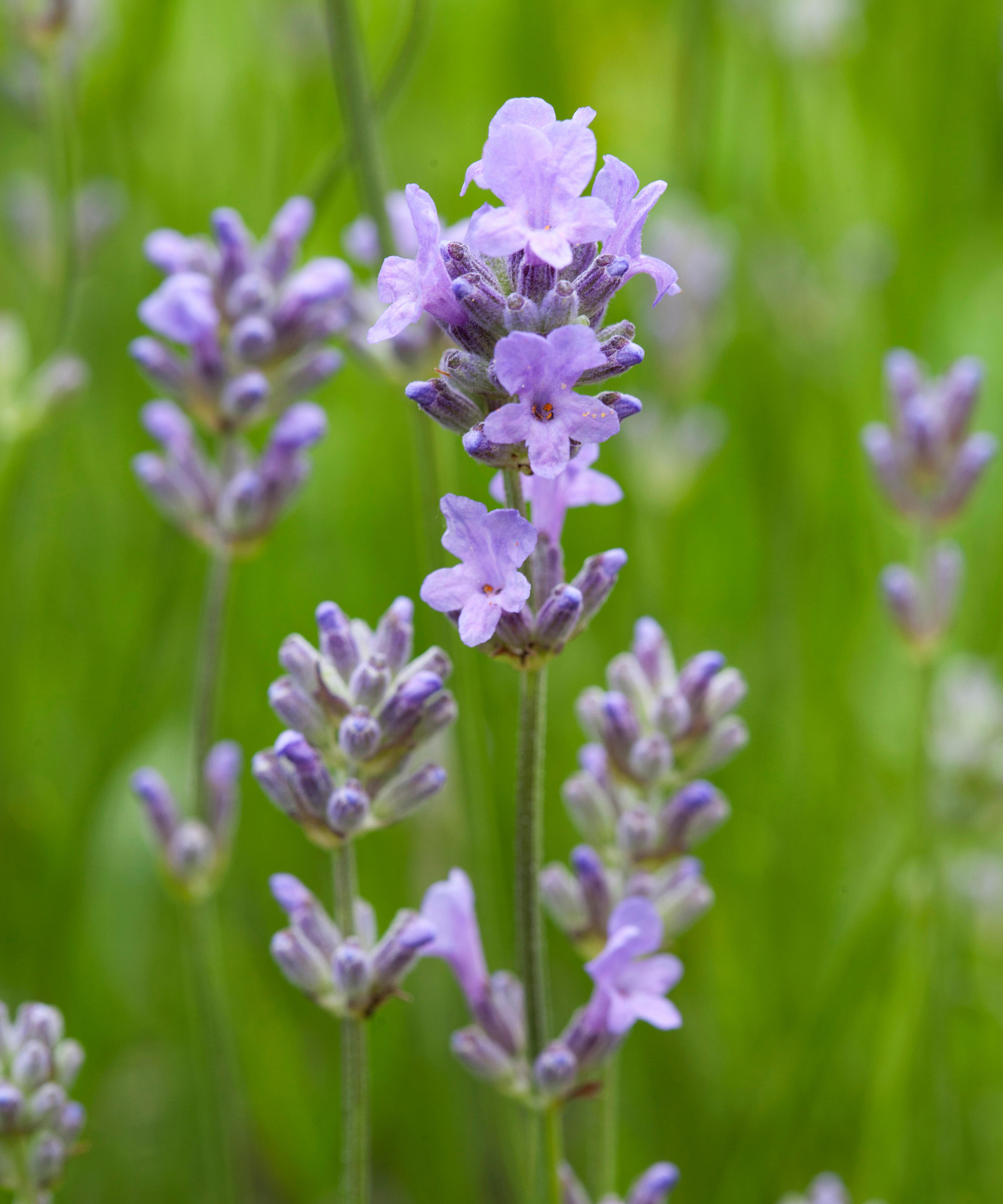
What vegetables grow well near the ocean?
Crops such as asparagus and beetroot have the sea in their genes so do well in coastal gardens. Kale grows rapidly too. Summer salads, spinach and spring onions also thrive.
If you want to learn how to create a herb garden in your coastal plot, the good news is that many herbs grow happily by the sea but especially rosemary, thyme, chives and basil.
More unusual vegetables like marsh grass samphire, which is native to the UK and Ireland, and sea purslane, which grows in coastal areas around the world, are experiencing a surge in popularity.
While good light is a benefit for your kitchen garden ideas, excessive wind makes for a shorter growing season. Vegetables that require an early start or a late finish will need the shelter of a sturdy polytunnel for protection.
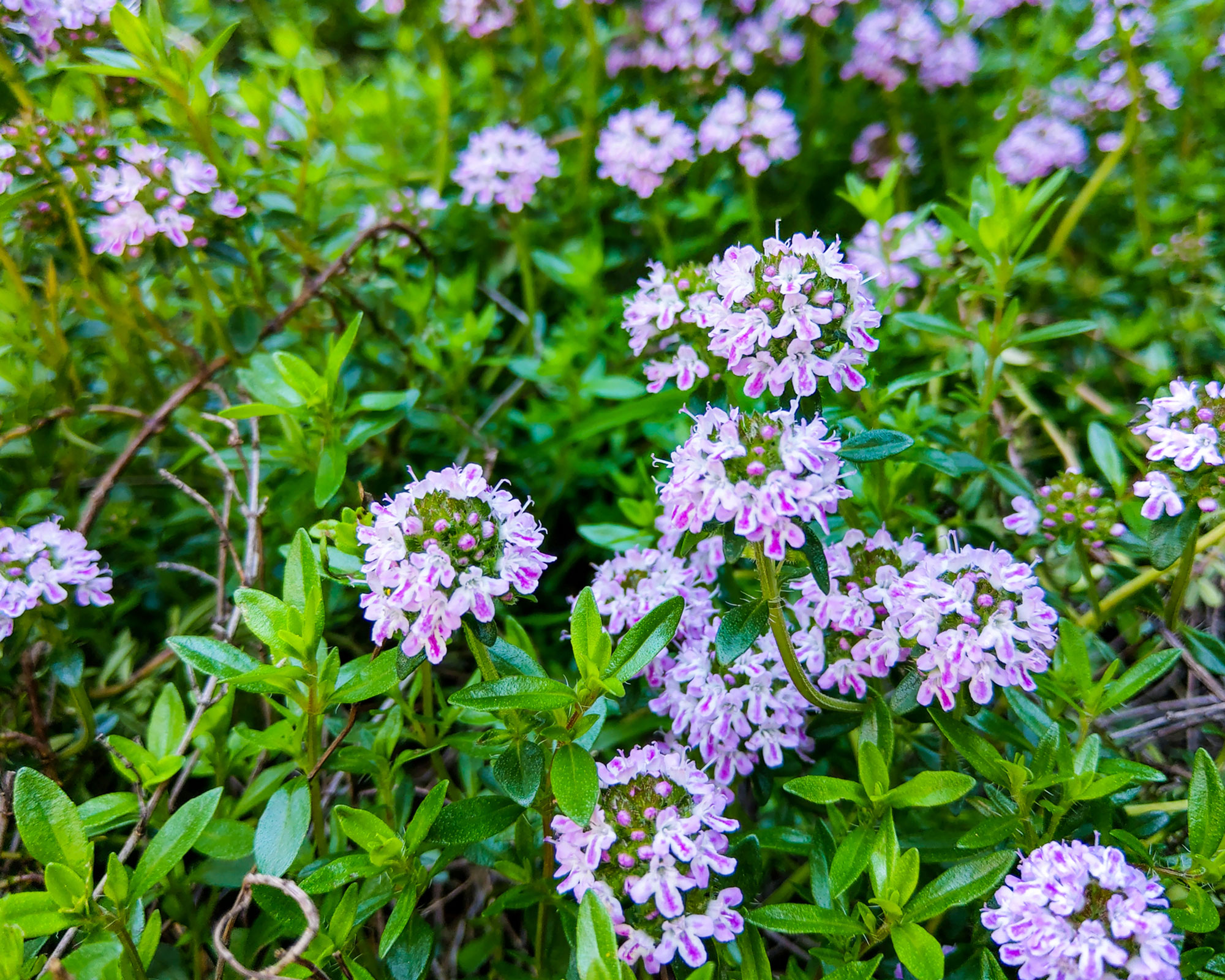

Lifestyle journalist Sarah Wilson has been writing about gardens since 2015. She's written for Gardeningetc.com, Livingetc, Homes & Gardens, Easy Gardens and Modern Gardens magazines. Having studied introductory garden and landscape design, she is currently putting the skills learned to good use in her own space where the dream is establishing a cutting garden.
